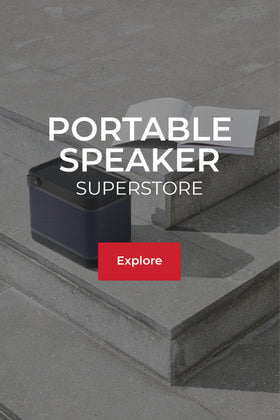
How Do Noise Cancelling Headphones Work?
This is for those active music listeners, who wish to tune out everything except the music they are currently listening to on a pair of headphones and are considering owning a pair of active noise cancelling headphones and for those who already own a pair but are curious about how it works.
There are actually two types of noise-cancelling headphones: active and passive. One uses special circuitry to reduce ambient noise that would otherwise interrupt your music. The other forms a tight seal inside or around your ear to isolate the listener. Let's take a closer look at active and passive noise-cancelling headphones. We'll also dive into the benefits of these headphones and consider some of the best noise-cancelling models available today.
How active noise-cancelling headphones work?
Active noise-cancelling refers to special circuitry inside headphones that "tricks" your ears into thinking there isn't any sound around you:
- Tiny microphones embedded within the headphones “listen” to ambient sounds in the outside world.
- Electronics inside the headphones generate a sound wave that is 180° out of phase with the sounds around you, literally canceling them out.
- You enjoy an island of near silence, save for whatever music you decide to play through the headphones.
Because of the extra electronics required for active noise cancelling, these headphones tend to go through batteries pretty quickly. If you opt for a pair, it’s a good idea to carry some extra batteries. If you’re using a model that includes a charging cable, you should keep that handy, too.
How passive noise-cancelling headphones work?
Let’s be clear about passive noise-cancelling: There’s nothing happening inside these headphones that “cancels” ambient noise. You won’t find any of the special electronics that live inside active noise-cancelling headphones. For this reason, passive noise-cancelling models are also called “noise-isolating” headphones.
Naming conventions aside, you’ll find these headphones as either:
- Closed-back, Over ear headphones that separate you from ambient noise, or
- In-ear headphones that form a tight seal to prevent sound from "getting in" and interrupting your music.
The lack of noise-cancelling circuitry doesn’t mean passive noise-cancelling headphones are inferior to their active counterparts! High-quality models do a fantastic job of isolating the listener, even when there's no special electronic wizardry at work.
Benefits of noise-cancelling headphones
Whether you choose an active or passive model, noise-cancelling headphones help create an environment that's free from ambient noise and distractions – something that's almost impossible to achieve under normal conditions.
After all, if you’re home alone, you can hear your refrigerator humming or your air conditioner turning on and off. Even at the library, there’s an ambient rustle of others turning pages and pulling books from shelves.
And so on. High quality noise-cancelling headphones erase virtually all of those noises. You’re left with a state of sonic solitude As a result, you can engage with your music – and only your music – without sacrificing any aspect of the listening experience.
Aside from the joys of immersive listening, here’s another reason to consider noise-cancelling headphones: saving your hearing. According to audiologists, listening through headphones at over 80 decibels can increase the risk of hearing loss.
And with conventional headphones, you might be cranking the volume more often than you think.
For instance, have you ever struggled to hear your tunes over the commotion inside a busy airport? Or maybe when traffic is whizzing by? It’s easy to turn up the volume in an attempt to drown out ambient sounds, and you might even do it subconsciously. At best, it’s a little annoying to have to listen to music at high volumes. At worst, you could damage your hearing.
To be sure, most in-ear headphones do a pretty good job of reducing ambient noise. A reduction of 25 to 30 decibels is typical. But if you’re always tapping the “plus” button to hear your music in noisy environments, noise-cancelling headphones might give your ears a much-needed break.
If you value interruption-free listening, noise-cancelling headphones are definitely worth it.
Noise-cancelling headphones are perfect for anyone who wants to check out for a while and spend some quality alone time with their favorite tunes. That’s most of us, so it makes sense that so many people rave about noise-cancelling and noise-isolating headphones.
The next time you find yourself in a noisy environment, need to focus, or just want an excuse not to answer the phone, slip on a pair of noise-cancelling headphones and tap “play.” You won’t regret setting aside the time for yourself.
The solitude might even be therapeutic.
Recommended noise-cancelling headphones
Now that we've explored the "how" and "why" of noise cancelling, let's take a look at some great noise-cancelling headphones. If you find something you like, we hope you will purchase them here, Noise-Cancelling Headphones




